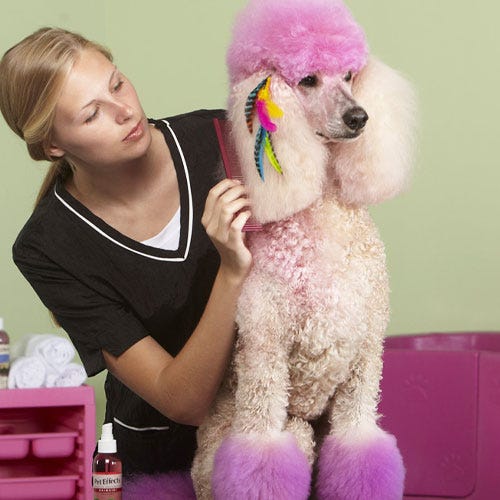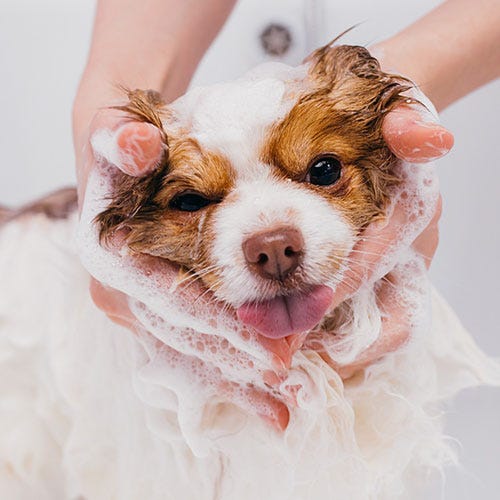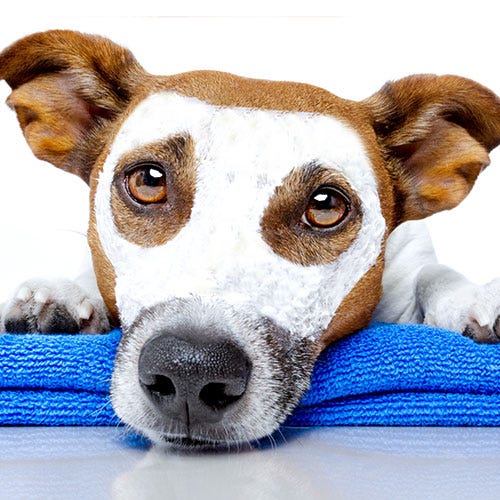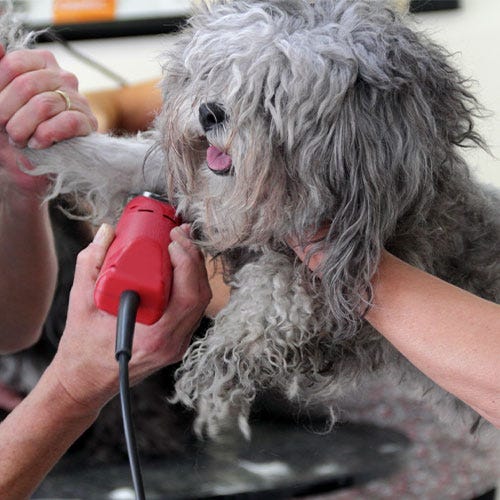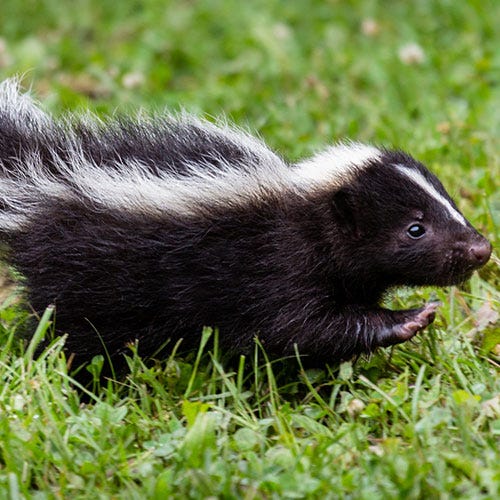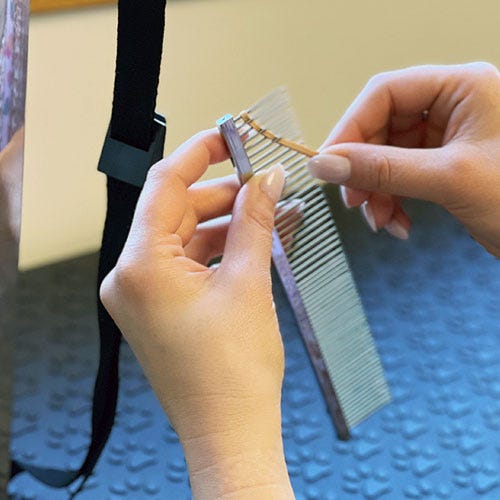Last week, a regular customer told me she'd been having some significant health issues and wanted to add a little happiness to her life. Could I please color her Bichon's tail pink? You bet I can; I will the next time she comes in.
Adding colorful touches to your pet grooming can be as simple as putting a bright bandana or bow on pets before they go home, or it can be a little more involved.
I have a small but dedicated number of customers who are devoted to having their dog's claws painted. I like using polish pens because they are easy and produce a nice finish. This process is easiest if you work with a shaved foot, such as one you might clip on a poodle. If your customer wants polish and the pet has fluffy feet, try this trick: push the paw into knee-high pantyhose. The claws will poke through, and the fabric will hold the fur away from them. Paint the claws, allow them to dry, then pull the stocking off. Voila!
If you want to add color to a white or light-colored coat, either all over or just sections such as ears, tails, or leg poms, a semi-permanent dye like Opawz is a good choice. These nontoxic dyes are made with food-grade pigments, do not contain peroxide or ammonia, and are pet-safe. If you have never toyed with semi-permanent dyes like this, you might want to practice on your own pet or borrow a likely candidate from a friend. It can be messy, but it can also be a lot of fun, and as my customer predicts, it can add some happiness for people with a sense of whimsy. Coats like poodle and Bichon will take the dye more readily, while coarse, wiry coats are trickier to work with. You will want to have gloves to protect your skin from getting dyed; consider wearing clothes you don't mind getting splattered, and use your oldest towels to dry the dog. Plan to wrap the dyed areas in foil and protect areas you do not want to be dyed with a heavy conditioner. (Note: Do not use dye on dogs with skin problems.)
You will need to plan on extra time for any groom that adds semi-permanent color. The dye has to remain on the coat for around 20 minutes, or as the label directs. Next, it is rinsed well. Then, just dry and style as usual.
Try using sidewalk chalk for less dramatic pops of color. Moisten a toothbrush in water, applynontoxic chalk to the brush, and add color to small white areas on the pet. Chalk is great for ear or tail tips. Brush it on, allow it to dry, then use a clean brush to fluff the coat. There is a possibility that chalk may rub off on the pet owner's clothes or furniture, so be sure to discuss this with them before trying it out.
Adding pops of color will make some pet owners very happy, and dabbling in such creative efforts can be a lot of fun for groomers, too.


